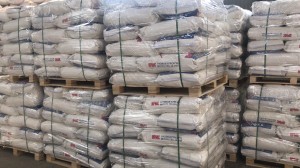What type of polymer is HPMC?
What type of polymer is HPMC?
HPMC, or hydroxypropyl methylcellulose, is a type of cellulose-based polymer that is widely used in the pharmaceutical, food, and personal care industries. Cellulose is a natural polymer that is found in plants and is the most abundant organic compound on earth. It is a linear polymer made up of glucose monomers that are linked by β(1→4) glycosidic bonds.
HPMC is produced by chemically modifying cellulose with either methyl or hydroxypropyl groups. These modifications can be made by reacting cellulose with the appropriate reagents in the presence of an acid catalyst. The reaction between cellulose and methyl chloride or methyl bromide yields methylcellulose, while the reaction between cellulose and propylene oxide yields hydroxypropyl cellulose. HPMC is produced by combining these two reactions to introduce both methyl and hydroxypropyl groups onto the cellulose backbone.
The resulting polymer has a complex structure that can vary depending on the degree of substitution (DS) of the methyl and hydroxypropyl groups. DS refers to the average number of substituted hydroxyl groups per anhydroglucose unit in the cellulose backbone. Typically, HPMC has a DS of 1.2 to 2.5 for the methyl groups and 0.1 to 0.3 for the hydroxypropyl groups. The structure of HPMC is further complicated by the fact that the methyl and hydroxypropyl groups can be randomly distributed along the cellulose backbone, resulting in a heterogeneous polymer with a range of properties.
HPMC is a water-soluble polymer that forms a gel-like substance when it is hydrated. The gelation properties of HPMC depend on a number of factors, including the DS, the molecular weight, and the concentration of the polymer. Generally, HPMC forms a more stable gel at higher concentrations and with higher DS values. In addition, the gelation properties of HPMC can be influenced by the pH, ionic strength, and temperature of the solution.
The unique properties of HPMC make it a valuable ingredient in many applications. In the pharmaceutical industry, HPMC is used as a binder, disintegrant, and film-forming agent in tablets and capsules. It can also be used to modify the release rate of drugs from a dosage form. In the food industry, HPMC is used as a thickener, stabilizer, and emulsifier. It is often used in low-fat or reduced-calorie foods to mimic the texture and mouthfeel of higher fat foods. In the personal care industry, HPMC is used as a thickener, film-forming agent, and emulsifier in shampoos, lotions, and other products.
In conclusion, HPMC is a cellulose-based polymer that is produced by chemically modifying cellulose with methyl and hydroxypropyl groups. The resulting polymer is water-soluble and has a complex structure that can vary depending on the degree of substitution and the distribution of the methyl and hydroxypropyl groups. HPMC is a versatile polymer that has many applications in the pharmaceutical, food, and personal care industries.
